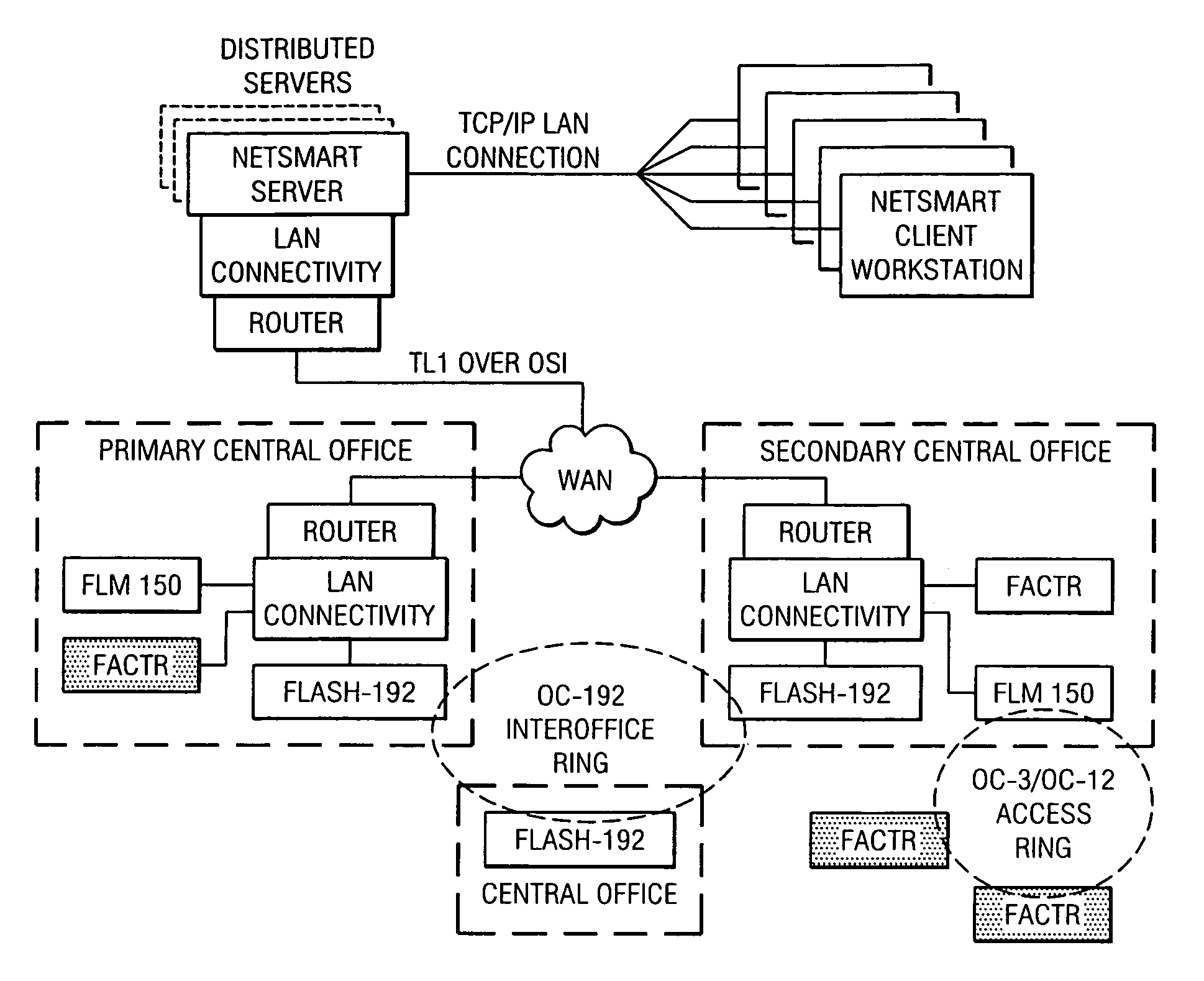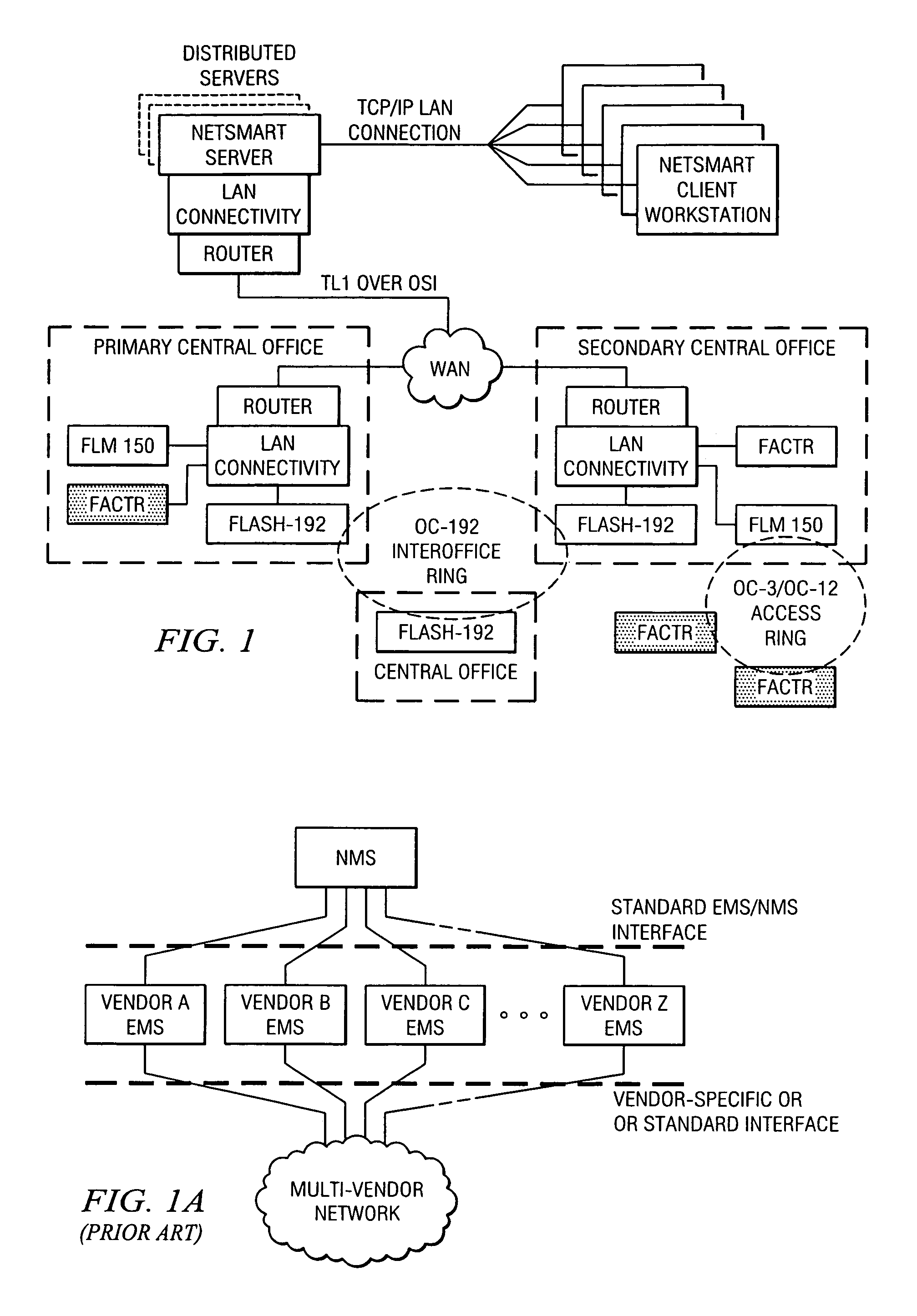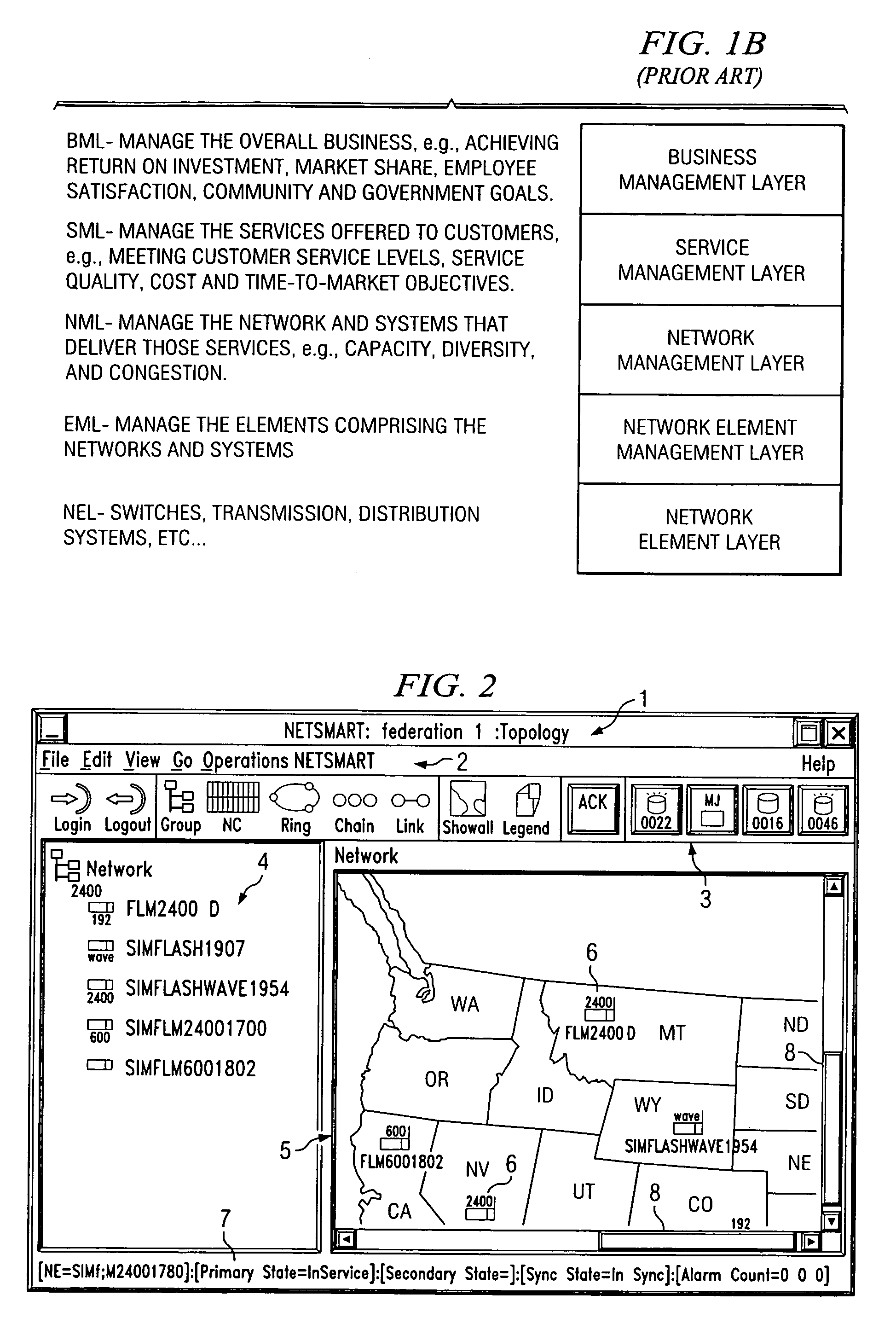Element management system with dynamic database updates based on parsed snooping
a database update and element management technology, applied in the field of telecommunication systems, can solve the problems of complex electronics, complex telecommunications networks to design, build, maintain, and add to this complexity
- Summary
- Abstract
- Description
- Claims
- Application Information
AI Technical Summary
Benefits of technology
Problems solved by technology
Method used
Image
Examples
Embodiment Construction
[0083]The numerous innovative teachings of the present application will be described with particular reference to the presently preferred embodiment (by way of example, and not of limitation).
[0084]Overview of NETSMART®
[0085]NETSMART is a true carrier-class network management system capable of managing very large Fujitsu-based SONET deployments while simultaneously supporting many active users. NETSMART helps build a business by providing the tools to monitor, provision, and troubleshoot the network with unprecedented scalability, graphical interface simplicity, and reliability. As with other user-friendly network management software products, the NETSMART system has an easy-to-use, intuitive graphical user interface (GUI) that allows the user to display a hierarchical view of the network down to the shelf and card level. NETSMART will also permit the user to obtain graphical control over surveillance, provisioning, software download (SWDL), remote memory backup (RMBU), and remote m...
PUM
 Login to View More
Login to View More Abstract
Description
Claims
Application Information
 Login to View More
Login to View More - R&D
- Intellectual Property
- Life Sciences
- Materials
- Tech Scout
- Unparalleled Data Quality
- Higher Quality Content
- 60% Fewer Hallucinations
Browse by: Latest US Patents, China's latest patents, Technical Efficacy Thesaurus, Application Domain, Technology Topic, Popular Technical Reports.
© 2025 PatSnap. All rights reserved.Legal|Privacy policy|Modern Slavery Act Transparency Statement|Sitemap|About US| Contact US: help@patsnap.com



